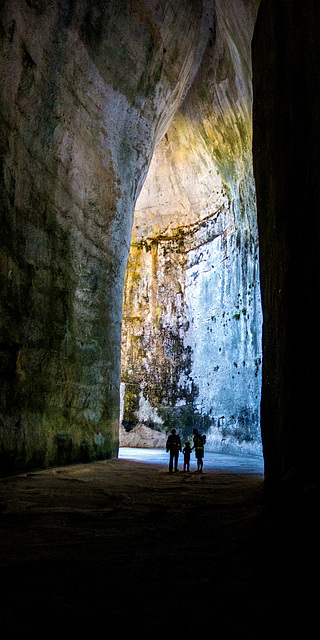Siracusa, The most famous latomìa is the Orecchio…
Siracusa, marina di Ortigia
Siracusa, boating activities in Syracuse, near the…
Siracusa, boating activities in Syracuse, near the…
Siracusa, Ortigia
Siracusa, the Greek Theatre
Siracusa, the Greek Theatre
Siracusa, the Greek Theatre
Siracusa, the Roman amphitheatre
Siracusa, the Roman amphitheatre
Siracusa
Freiburg, Blick vom Jesuitenschloss
Freiburg, Blick aufs Jesuitenschloss
Old Cemetery Freiburg
Old Cemetery Freiburg
Old Cemetery Freiburg
Old Cemetery Freiburg
Old Cemetery Freiburg
Freiburg, Münsterplatz
Ibach im Schwarzwald
Dom St. Blasien
Dom St. Blasien
Dom St. Blasien
Siracusa
Taormina
Siracusa
Siracusa
Isola Bella (Taormina)
Isola Bella (Taormina)
Taormina
Taormina
Gardini Naxos during the blue hour
Twilight at Gardini Naxos
Taormina, the Sicilian marionette theater Opera de…
Taormina, Teatro Greco
Taormina, Antica Trattoria La Botte
Taormina
Taormina as seen from the Castelmola overlooking t…
Sicilia, Beach Giardini Naxos and Mount Etna
"Defecating person" - "Hinternentblößer", south si…
Breakfast fruit at Jimbaran Puri Bali Hotel
Teneriffa, Puerto de la Cruz
Pico del Teide
Spargelpfannengericht, Martinshöhe in Ihringen (Ka…
São Miguel Island / Azores
Location
Lat, Lng:
You can copy the above to your favourite mapping app.
Address: unknown
You can copy the above to your favourite mapping app.
Address: unknown
Keywords
Authorizations, license
-
Visible by: Everyone -
All rights reserved
-
152 visits
Siracusa, The most famous latomìa is the Orecchio di Dionisio ("Ear of Dionysius")


The name of the cave was coined in 1586 by the painter Caravaggio. It refers to the tyrant Dionysius I of Syracuse. According to legend (possibly one created by Caravaggio), Dionysius used the cave as a prison for political dissidents, and by means of the perfect acoustics eavesdropped on the plans and secrets of his captives. Another more gruesome legend claims that Dionysius carved the cave in its shape so that it would amplify the screams of prisoners being tortured in it. Unfortunately, the sound focusing effect can no longer be heard because access to the focal point is no longer possible.
Because of its reputation for acoustic flawlessness, the Ear of Dionysius has also come to refer to a type of ear trumpet that has a flexible tube. The term 'Ear of Dionysius' can also refer to surveillance, specifically that for political gain.
There is a strong possibility that this feature is actually of natural origin. It lies on the down slope side of a substantial hill it could well be a 'slot' canyon cut by rainwater run-off in prehistoric times. Comparing it to other 'slot' canyons, especially those in the state of Utah (USA), it shows many similar characteristics. The narrowness of the top opening and widening of the lower part are also common to slot caverns elsewhere, as is its serpentine shape. The highly polished sides also suggest that the phenomenon was created by water. Such a natural feature, especially given its acoustics, would have been valued in the ancient world for its supposed sacred properties and this could have led to its preservation. Had it been man-made, why would the 'quarriers' bother to polish its walls to such a high degree, or remove stone in such an impractical fashion? Given that the building of the extensive Necropolis that abuts it on the hillside above involved removing a huge amount of the original overlaying rock, it is also possible that this 'canyon' extended even further before men began quarrying there.
Because of its reputation for acoustic flawlessness, the Ear of Dionysius has also come to refer to a type of ear trumpet that has a flexible tube. The term 'Ear of Dionysius' can also refer to surveillance, specifically that for political gain.
There is a strong possibility that this feature is actually of natural origin. It lies on the down slope side of a substantial hill it could well be a 'slot' canyon cut by rainwater run-off in prehistoric times. Comparing it to other 'slot' canyons, especially those in the state of Utah (USA), it shows many similar characteristics. The narrowness of the top opening and widening of the lower part are also common to slot caverns elsewhere, as is its serpentine shape. The highly polished sides also suggest that the phenomenon was created by water. Such a natural feature, especially given its acoustics, would have been valued in the ancient world for its supposed sacred properties and this could have led to its preservation. Had it been man-made, why would the 'quarriers' bother to polish its walls to such a high degree, or remove stone in such an impractical fashion? Given that the building of the extensive Necropolis that abuts it on the hillside above involved removing a huge amount of the original overlaying rock, it is also possible that this 'canyon' extended even further before men began quarrying there.
- Keyboard shortcuts:
Jump to top
RSS feed- Latest comments - Subscribe to the comment feeds of this photo
- ipernity © 2007-2025
- Help & Contact
|
Club news
|
About ipernity
|
History |
ipernity Club & Prices |
Guide of good conduct
Donate | Group guidelines | Privacy policy | Terms of use | Statutes | In memoria -
Facebook
Twitter

Sign-in to write a comment.